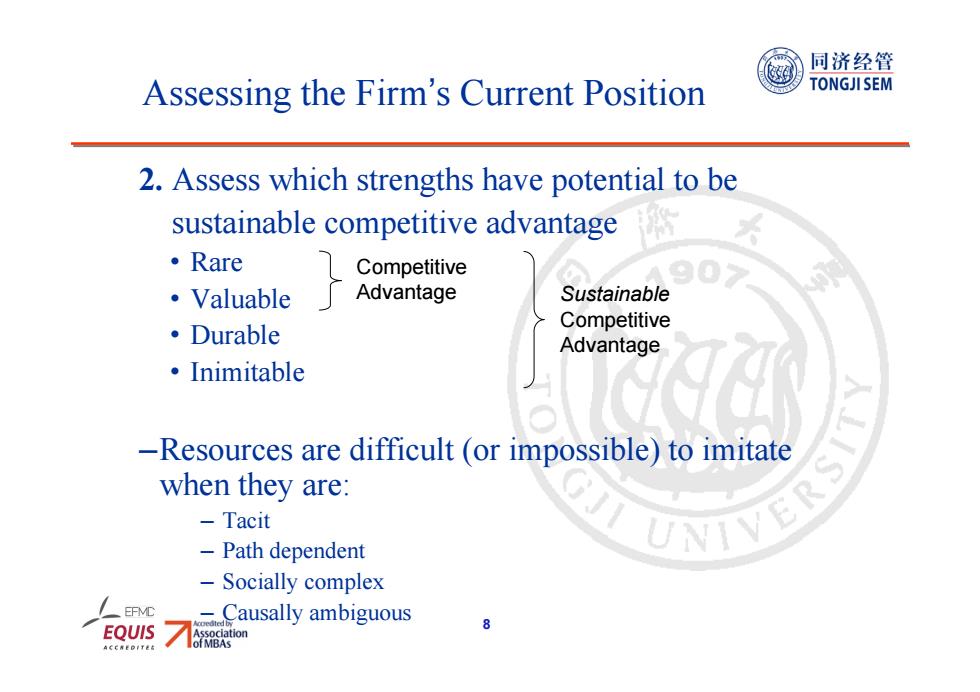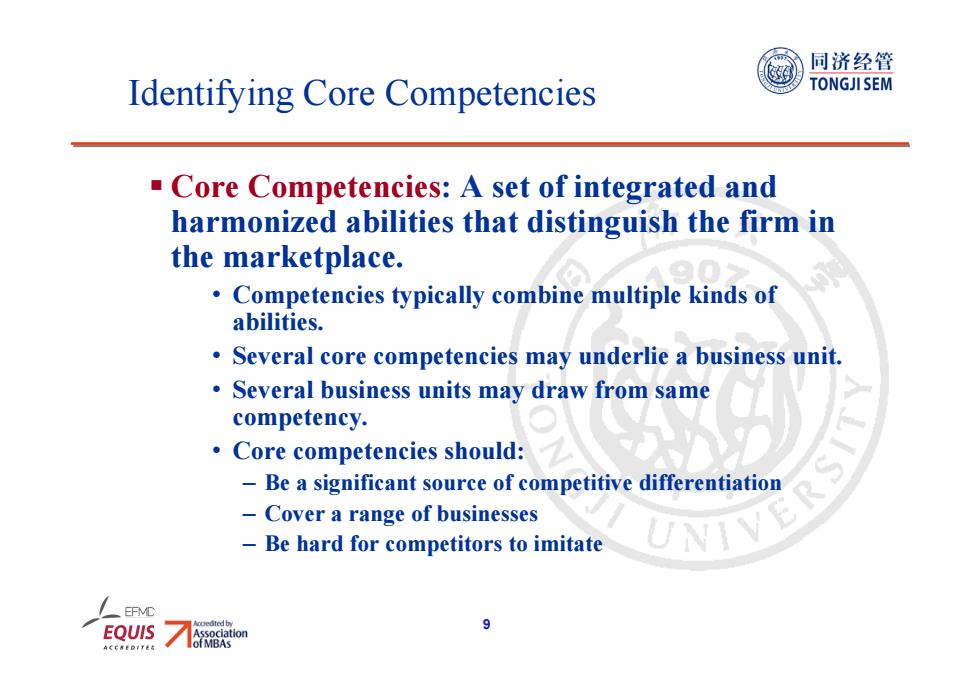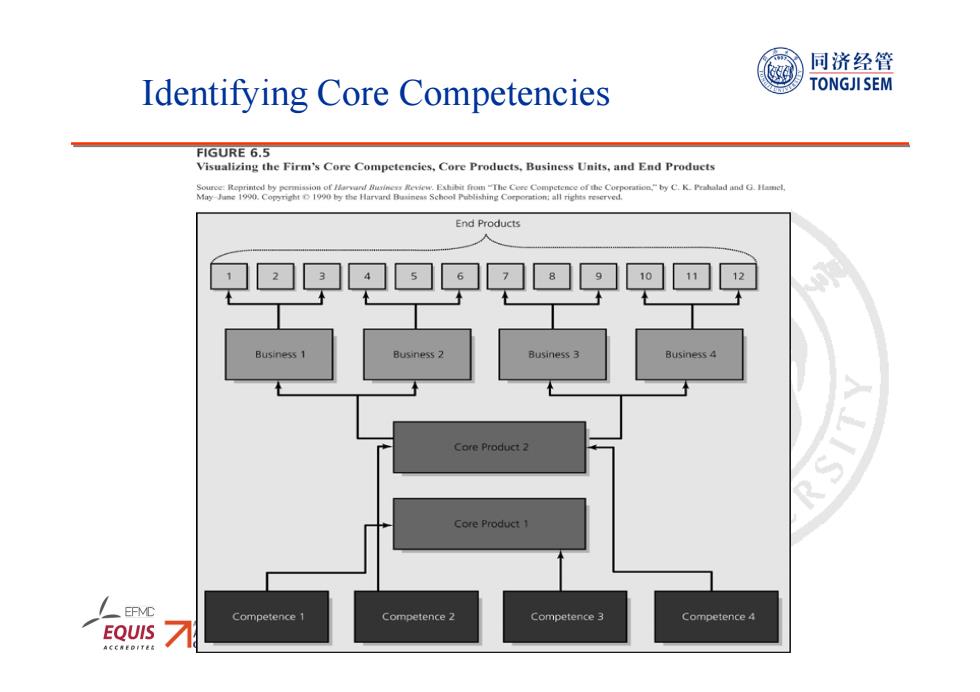
同济经管 Assessing the Firm's Current Position TONGJI SEM Stakeholder Analysis 1.Who are the stakeholders. FIGURE 6.2 Stakeholder stomer Analysis ploye 2.What does each stakeholder want. Local 3.What resources Stockholders do they contribute to the vernm organization. 4.What claims are they likely to make on the organization. EFMC EQUIS 6
6 Assessing the Firm’s Current Position Stakeholder Analysis 1. Who are the stakeholders. 2. What does each stakeholder want. 3. What resources do they contribute to the organization. 4. What claims are they likely to make on the organization

同济经管 Assessing the Firm's Current Position TONGJI SEM ■ Internal Analysis 1.Identify the firm's strengths and weaknesses.Helpful to consider each element of value chain. FIGURE 6.3 Porter's Value Chain Source:Adapted with the permission of The Free Press,a Division of Simon Schuster Adult Publishing Group.from Comperirive Advantage:Creating and Sustaining Superior Performance by Michael E.Proter.Copyright 1985,1998 by Michael E.Porter. Firm Infrastructure Human Resource Management Technology Development Procurement Inbound Operations Outbound Marketing Service Logistics Logistics
7 Assessing the Firm’s Current Position Internal Analysis 1. Identify the firm’s strengths and weaknesses. Helpful to consider each element of value chain

同济经管 Assessing the Firm's Current Position TONGJI SEM 2.Assess which strengths have potential to be sustainable competitive advantage ·Rare Competitive ·Valuable Advantage Sustainable Competitive ·Durable Advantage ·Inimitable -Resources are difficult(or impossible)to imitate when they are: Tacit -Path dependent Socially complex EFMC -Causally ambiguous EQUIS 16熙oa 8
8 2. Assess which strengths have potential to be sustainable competitive advantage • Rare • Valuable • Durable • Inimitable –Resources are difficult (or impossible) to imitate when they are: – Tacit – Path dependent – Socially complex – Causally ambiguous Assessing the Firm’s Current Position Competitive Advantage Sustainable Competitive Advantage

同济经管 Identifying Core Competencies TONGJI SEM -Core Competencies:A set of integrated and harmonized abilities that distinguish the firm in the marketplace. Competencies typically combine multiple kinds of abilities. Several core competencies may underlie a business unit. Several business units may draw from same competency. Core competencies should: Be a significant source of competitive differentiation -Cover a range of businesses Be hard for competitors to imitate dted by EOUIS
9 Identifying Core Competencies Core Competencies: A set of integrated and harmonized abilities that distinguish the firm in the marketplace. • Competencies typically combine multiple kinds of abilities. • Several core competencies may underlie a business unit. • Several business units may draw from same competency. • Core competencies should: – Be a significant source of competitive differentiation – Cover a range of businesses – Be hard for competitors to imitate

同济经管 Identifying Core Competencies TONGJI SEM FIGURE 6.5 Visualizing the Firm's Core Competencies,Core Produets.Business Units,and End Products End Products 245☑6?☑8☑☐2 Core Product 2 Core Product 1 /EFMC Competence Competence 2 Competence 3 Competence 4 EQUIS
10 Identifying Core Competencies